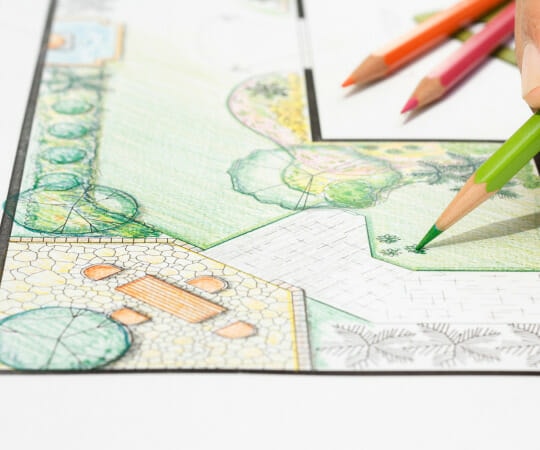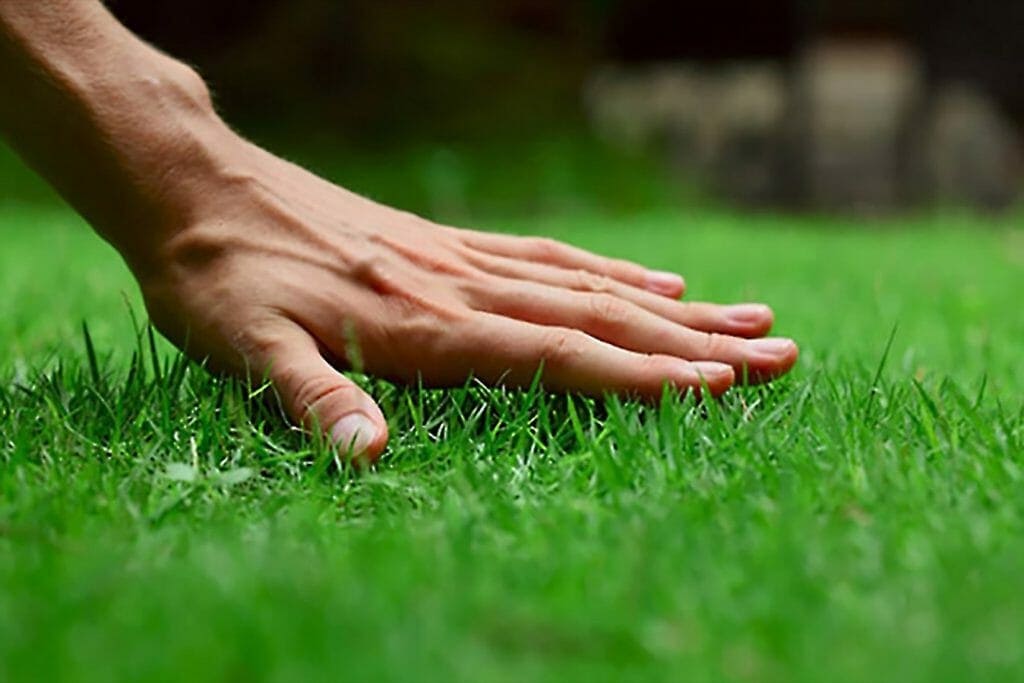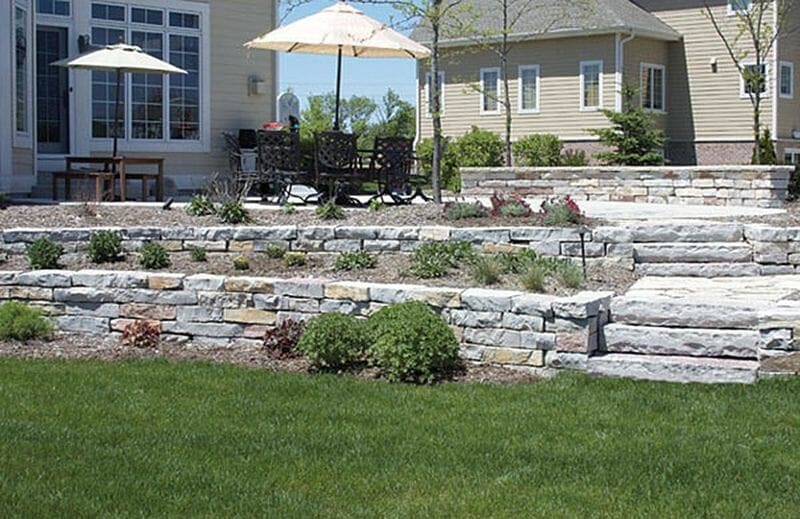Unleashing Garden Magic: Exploring the Secrets of Effortless Garden Planning and Design
Are you tired of looking at your uninspired garden? Do you want to transform it into a lush and inviting space that you can be proud of? Look no further than this article on seamless garden transformation.
In this guide, we will explore the secrets of garden planning and design, giving you all the tools necessary to turn your lackluster outdoor space into a stunning oasis.
First, we will help you assess your space and needs. This is crucial in creating a personalized plan for your garden that takes into account the unique characteristics and limitations of your yard.
Next, we’ll show you how to select the right plants for your specific climate and soil conditions. We’ll also delve into incorporating hardscaping features such as walkways, patios, and retaining walls to add structure and visual appeal to your garden.
With our guidance on designing a layout that optimizes flow and functionality, along with tips on maintaining your garden’s health over time, you’ll be well-equipped to create a beautiful outdoor haven.
So let’s get started!
Assess Your Space and Needs
Now it’s time to take a step back and assess what you really need in your outdoor space. Maximizing functionality is key, so consider how you’ll be using your garden.
Do you want to entertain guests? Do you have children or pets that need space to play? Are you hoping to grow your own vegetables or herbs? Once you have a clear idea of what your needs are, start thinking about sustainable practices that can support them.
Consider incorporating features like rainwater harvesting systems, compost bins, and energy-efficient lighting. These small changes can make a big impact on the environment while also saving you money in the long run.
With an understanding of both your functional needs and eco-friendly options, you can create a garden that not only looks beautiful but also serves a purpose.
Now that you’ve assessed your space and needs, it’s time to select the right plants for your garden design.
Select the Right Plants
Choosing the perfect plants for your outdoor space can be a breeze with these helpful tips. First, consider the climate and weather patterns in your area. This will help determine which plants are best suited for your garden. If you live in an area with hot summers and cold winters, look for plants that can withstand extreme temperatures such as conifers or succulents.
Another important factor to consider when selecting plants is soil preparation techniques. Make sure to test your soil’s pH levels before planting anything. If the pH level is too high or low, it can affect plant growth and health. Additionally, choose plants that thrive in the type of soil you have. For example, if you have clay soil, opt for plants like lavender or yarrow that do well in heavy soils.
Incorporating hardscaping features into your garden design can add texture and dimension to your outdoor space. By using elements like pathways, retaining walls, or water features, you can create a cohesive design that complements your plant selections and adds interest to your overall landscape.
Incorporate Hardscaping Features
Now that you’ve selected the right plants for your garden, it’s time to think about incorporating hardscaping features.
Adding pathways, patios, and seating areas will not only enhance the functionality of your outdoor space but also provide a welcoming atmosphere for guests.
Integrating water features and lighting can add an extra layer of ambiance while decorative elements such as sculptures or trellises can elevate the visual appeal of your garden.
Don’t be afraid to get creative with these hardscaping features to truly transform your backyard oasis.

Add Pathways, Patios, and Seating Areas
To make your outdoor space more inviting, consider adding winding walkways, cozy sitting areas, and relaxing patios. Pathways can be created using a variety of materials such as stone, brick, or gravel. They can lead guests through the garden and create an element of surprise around every corner.
Patios are perfect for outdoor entertaining and dining with family and friends. Outdoor furniture, planters, pergolas, and gazebos can all be used to enhance the aesthetics of these seating areas.
When planning the placement of your pathways and patios, it’s important to take into consideration the flow of foot traffic throughout your garden. You want to ensure that there is enough space for people to easily navigate through different areas without encountering any obstacles.
Seating areas should also be placed strategically in order to take advantage of natural views or special garden features like waterfalls or fountains. Integrating water features and lighting into your design will add another layer of beauty to your garden oasis.
Integrate Water Features and Lighting
Don’t forget to enhance the beauty of your outdoor space by incorporating water features and lighting.
Water elements such as fountains, ponds, and waterfalls can add a calming ambiance to your garden while also attracting wildlife such as birds and butterflies. When deciding on water feature placement, consider the size of your garden and how much maintenance you’re willing to do. Smaller gardens may benefit from a small fountain or bird bath, whereas larger spaces can accommodate larger features like ponds or waterfalls.
In addition to water features, lighting design is another important aspect in transforming your garden into an enchanting oasis at night. Outdoor lighting provides not only practicality but also aesthetic appeal by highlighting certain areas of your garden and creating depth and texture. Consider adding string lights across seating areas or pathways for a cozy atmosphere, or installing spotlights for dramatic effects on trees or sculptures.
By thoughtfully integrating both water features and lighting design into your garden plan, you’ll create an outdoor space that’s beautiful day or night.
As you’re planning and designing your seamless garden transformation, keep in mind the importance of using decorative elements to enhance visual appeal without being overbearing.
Use Decorative Elements to Enhance Visual Appeal
You can take your outdoor space to the next level by adding decorative elements that’ll enhance its visual appeal and make it stand out from the rest.
Garden sculptures are a great way to add personality and character to your garden. They come in various sizes, shapes, and colors, so you can choose one that complements your garden’s theme or style. Depending on the size of your garden, you can choose from small ornaments like bird baths or larger statues like fountains or animal figures.
Ornamental structures such as trellises, arbors, and pergolas not only add beauty but also serve a practical purpose. They provide shade during hot summer days and act as support for climbing plants.
Another way to decorate your garden is by using containers and pots. You can play around with different styles, materials, and colors to create a cohesive look that ties in with the overall theme of your garden.
Additionally, incorporating decorative lighting fixtures like lanterns or string lights will add ambiance and atmosphere when entertaining guests at night.
By adding these elements to your garden space, you’re creating an inviting environment that everyone will enjoy spending time in.
In designing a layout for your transformed garden space, consider how these decorative elements can be integrated into the overall design plan seamlessly. With careful planning and execution of these ideas, you’ll have a stunning outdoor area that reflects both aesthetic beauty and functional design principles.

Design a Layout
As we dive into mapping out our vision for the outdoor space, it’s important to consider the different elements that will come together to create a harmonious and functional layout. Think about plant placement and color schemes that work well together, creating a sense of flow and balance in your garden.
Focal points like garden art can also help guide the eye through your space, adding interest and personality. When designing your layout, start by thinking about how you want to use the space: do you need seating areas or play spaces for children? Do you want a dedicated area for gardening or entertaining?
Once you have an idea of what you want to accomplish with your garden, sketch out a rough plan that includes these elements. Remember to leave room for growth and change over time – as plants mature and your needs evolve, you may find yourself rearranging things down the road.
As we move forward into maintaining your garden, keep in mind these initial design choices when making decisions about upkeep and expansion.
Maintain Your Garden
Once your outdoor space is established, keeping it looking beautiful and functional can be easily achieved with regular maintenance.
One of the most important aspects of garden maintenance is weeding. Weeds can quickly take over a garden and compete with plants for nutrients, sunlight, and water. To effectively remove weeds, it’s essential to use proper weeding techniques. Pulling weeds by hand is the most effective method as it ensures that the entire root system is removed. However, if you have a large garden or are unable to kneel down for long periods of time, using a hoe or other gardening tool may be more practical.
Another key component of garden maintenance is soil fertility. Healthy soil is critical for plant growth and productivity. Adding organic matter such as compost or manure to the soil will provide essential nutrients that plants need to grow strong and healthy roots.
It’s also important to test your soil periodically to ensure that it has the right pH balance for optimal plant growth. Maintaining proper soil fertility will not only benefit your plants but can also help reduce weed growth and improve overall garden health.
With these simple steps in mind, maintaining a beautiful and functional garden can be easily achieved year-round!
Frequently Asked Questions
How do I choose the perfect color scheme for my garden?
So, you’re trying to choose the perfect color scheme for your garden. Congratulations on this monumental decision. After all, the fate of your entire outdoor space rests on what colors you pick. No pressure whatsoever.
But fear not, dear reader, because color psychology is here to save the day. Consider what emotions you want your garden to evoke and choose colors accordingly – blues and purples for a calm vibe, yellows and oranges for energy and warmth, greens for a sense of serenity.
Don’t forget to take seasonal variations into account as well – bright and bold in the summer, muted tones in the fall. With these tips in mind, go forth and paint (or plant) with confidence!
What are some eco-friendly practices I can incorporate into my garden design?
Are you looking for ways to make your garden design more eco-friendly?
One great option to consider is vertical gardening. This technique involves growing plants on a wall or other vertical surface, which can save space and reduce the amount of water needed for each plant.
Another eco-friendly practice is composting, which involves turning food scraps and yard waste into nutrient-rich soil that can be used in your garden. There are many techniques for composting, including using a bin or simply creating a pile in your backyard.
By incorporating these practices into your garden design, you can create a beautiful space that is also sustainable and environmentally friendly.
How do I attract and maintain beneficial insects and pollinators in my garden?
You want your garden to be teeming with life – from vibrant flowers to buzzing bees. But how do you attract and maintain beneficial insects and pollinators?
Companion planting is one method that can help. By strategically placing plants together, you can create a natural ecosystem where good bugs thrive while pests are deterred.
Additionally, organic pest control methods, like using neem oil or introducing ladybugs, can also keep your garden healthy without harming the environment.
With these techniques, your garden will become a hub of activity where pollinators and beneficial insects happily coexist.
What are some creative ways to incorporate water features into my garden design?
Are you looking to add a unique touch to your garden design? Consider incorporating water features like waterfall installations or DIY pond projects.
Waterfalls can provide a calming atmosphere and act as a focal point in your outdoor space.
DIY ponds allow for creativity and customization, while also attracting wildlife like frogs and birds.
When planning your water feature, consider the size of your yard, the style of your home, and the amount of maintenance required.
With proper planning and execution, adding a water feature to your garden can transform it into an oasis for both you and nature.
How can I ensure my garden is accessible and enjoyable for people with disabilities or mobility issues?
Are you worried that your garden isn’t accessible or enjoyable for people with disabilities or mobility issues? Don’t let that stop you from creating a beautiful and functional outdoor space.
There are plenty of ways to make your garden more inclusive, such as incorporating adaptive equipment like ramps and handrails. You can also consider using raised beds, which not only make it easier for those with limited mobility to reach and tend to plants, but also add visual interest to your design.
With a little planning and creativity, you can ensure that everyone can enjoy the beauty of your garden.
Conclusion
Congratulations! You’ve taken the first step towards creating a seamless garden transformation.
By assessing your space and needs, selecting the right plants, incorporating hardscaping features, designing a layout, and maintaining your garden, you’ll be well on your way to enjoying a beautiful outdoor oasis.
Remember that gardening is an art form that requires both creativity and attention to detail. It’s important to take the time to plan out every aspect of your garden carefully.
Just like a painter approaches their canvas with care and precision, so too must you approach your garden with patience and dedication.
As you embark on this journey of planning and designing your dream garden, let it flow naturally like water from a babbling brook. With each thoughtful decision you make, allow yourself to become fully immersed in the process.
By doing so, you’ll create not just a stunning visual masterpiece but also a peaceful sanctuary where you can relax and unwind amidst nature’s beauty.
So go forth and start transforming your garden today – there’s no better time than now!
Related Sources
LANDSCAPE DESIGN: TEN IMPORTANT THINGS TO CONSIDER



